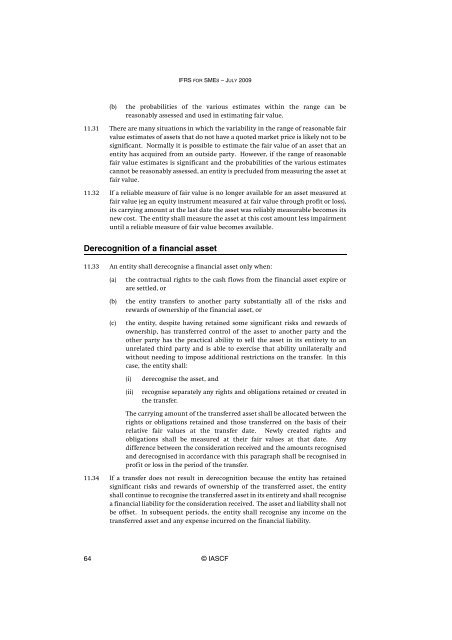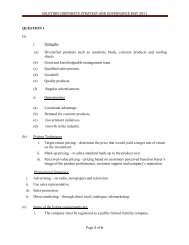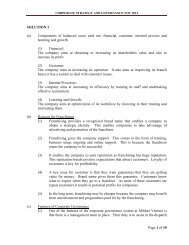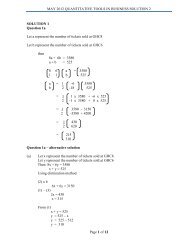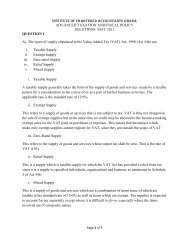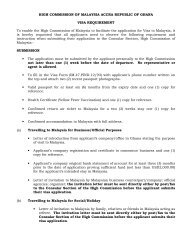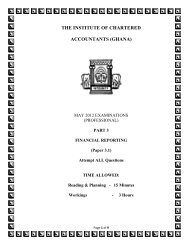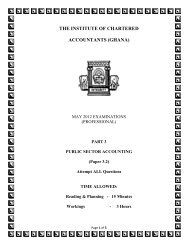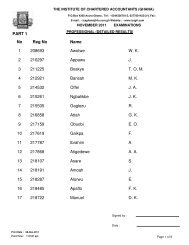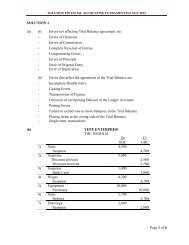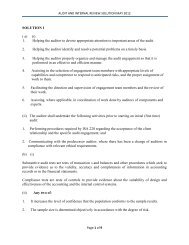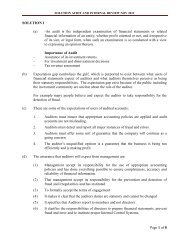(IFRS) for Small and Medium-sized Entities (SMEs)
(IFRS) for Small and Medium-sized Entities (SMEs)
(IFRS) for Small and Medium-sized Entities (SMEs)
Create successful ePaper yourself
Turn your PDF publications into a flip-book with our unique Google optimized e-Paper software.
<strong>IFRS</strong> FOR SMES – JULY 2009(b)the probabilities of the various estimates within the range can bereasonably assessed <strong>and</strong> used in estimating fair value.11.31 There are many situations in which the variability in the range of reasonable fairvalue estimates of assets that do not have a quoted market price is likely not to besignificant. Normally it is possible to estimate the fair value of an asset that anentity has acquired from an outside party. However, if the range of reasonablefair value estimates is significant <strong>and</strong> the probabilities of the various estimatescannot be reasonably assessed, an entity is precluded from measuring the asset atfair value.11.32 If a reliable measure of fair value is no longer available <strong>for</strong> an asset measured atfair value (eg an equity instrument measured at fair value through profit or loss),its carrying amount at the last date the asset was reliably measurable becomes itsnew cost. The entity shall measure the asset at this cost amount less impairmentuntil a reliable measure of fair value becomes available.Derecognition of a financial asset11.33 An entity shall derecognise a financial asset only when:(a)(b)(c)the contractual rights to the cash flows from the financial asset expire orare settled, orthe entity transfers to another party substantially all of the risks <strong>and</strong>rewards of ownership of the financial asset, orthe entity, despite having retained some significant risks <strong>and</strong> rewards ofownership, has transferred control of the asset to another party <strong>and</strong> theother party has the practical ability to sell the asset in its entirety to anunrelated third party <strong>and</strong> is able to exercise that ability unilaterally <strong>and</strong>without needing to impose additional restrictions on the transfer. In thiscase, the entity shall:(i)(ii)derecognise the asset, <strong>and</strong>recognise separately any rights <strong>and</strong> obligations retained or created inthe transfer.The carrying amount of the transferred asset shall be allocated between therights or obligations retained <strong>and</strong> those transferred on the basis of theirrelative fair values at the transfer date. Newly created rights <strong>and</strong>obligations shall be measured at their fair values at that date. Anydifference between the consideration received <strong>and</strong> the amounts recognised<strong>and</strong> derecognised in accordance with this paragraph shall be recognised inprofit or loss in the period of the transfer.11.34 If a transfer does not result in derecognition because the entity has retainedsignificant risks <strong>and</strong> rewards of ownership of the transferred asset, the entityshall continue to recognise the transferred asset in its entirety <strong>and</strong> shall recognisea financial liability <strong>for</strong> the consideration received. The asset <strong>and</strong> liability shall notbe offset. In subsequent periods, the entity shall recognise any income on thetransferred asset <strong>and</strong> any expense incurred on the financial liability.64 © IASCF


